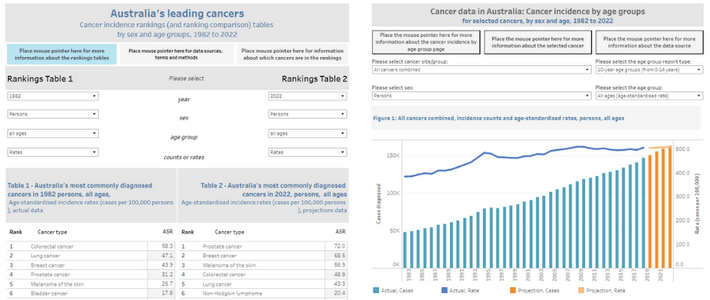Are Prostate Cancer Statistics Reliable?
We all know statistics can be applied selectively to justify a point of view, however sometimes they can cause concern without meaning to do so.

Take for example a recent article published in The West Australian on Tuesday 5 July 2022 with a heading “Prostate overtakes breast cancer in Aust” (read the full article HERE).
Perhaps you have an image of a prostate in his running shoes scooting past a breast cancer on his journey around the globe? The news article clarifies this by stating “Prostate cancer is now the most common cancer diagnosed in Australia, overtaking breast cancer as the country's number one cancer.” Some other newspapers even went as far to say it overtook breast cancer for the first time.
According to the Australian Institute of Health and Welfare, prostate cancer became the number one diagnosed cancer in Australia in 2003 and has stayed number one for the past twenty years. It overtook breast cancer to become number two in 2002 and overtook colorectal cancer to become number one in 2003. The statistics are there, published for all to see on the Australian Institute of Health and Welfare’s website under a heading “Cancer rankings data visualisation”.

However, last year’s predicted figures by AIHW for prostate cancer for some reason were written down significantly to an estimated 18,110 cases to be diagnosed in 2021 despite recording well above 20,000 cases a year since 2017 and 23,173 cases the year before in 2020. Therefore based on that predicted number, breast cancer was predicted to overtake prostate cancer in 2021 as the most common cancer diagnosed in Australia, but it simply didn’t happen. That prediction was proved totally inaccurate with the actual numbers for prostate cancers diagnosed in 2021 now published as 23,737, and we now see a more reasonable prediction of 24,217 for 2022.
We have also seen some newspapers reporting an increase of 34% in cases in one year based on the disparity between the predicted numbers for 2021 and 2022, whereas the more realistic number is an increase of only 2% based on the actual number in 2021 versus the predicted number for 2022 (much in line with previous yearly increases).
The sad thing is that the number of men diagnosed with prostate cancer in Australia continues to rise each year, but although total numbers increase annually, the incidence rate has decreased since a high reached on 2009 (down to 72 per 100,000 from 93.7 per 100,000 people).
There is also some conjecture relating to the risk for prostate cancer. We have seen figures published recently ranging from 1 in 9 down to 1 in 5. Obviously our risk increases as we age. We know that the older men become the more likely they are to be diagnosed with prostate cancer. We know men aged under 35 have a very minimal risk, at 41 - 45 the risk factor is only 1 in 1,930. But as we get older at ages 56 – 60 the risk becomes 1 in 46, at ages 61 to 65 it is 1 in 22, at ages 66 to 70 it is 1 in 12, at ages 71 – 75 it is 1 in 9, at ages 76 – 80 it is 1 in 7, at ages 81 – 85 it is 1 in 6 and at ages 86 – 90 it is 1 in 5. Commonly we therefore see published the lifetime predicted incidence of 1 in 5.
To further explore the statistical anomalies, based on AIHW estimates, the number of men who are predicted to die from prostate cancer in Australia in 2022 is 3,507. If the number estimated to be diagnosed in 2022 is 24,217 then the number of people dying of prostate cancer this year represents 14% of the number of people diagnosed. However, that’s not really an accurate representation as we know it can be many years between the date of diagnosis and end of life, and although we may have prostate cancer there may also be co-morbidities, so what cause of death is statistically listed? We often see the published statistic that 95.5% of males (all ages) diagnosed with prostate cancer survived 5 years after diagnosis, after adjusting for general mortality (based on 2014 – 2018 data).
So statistics can be interesting to explore, but how they are interpreted and represented may not necessarily be relevant to you. We know we are all individual and our journeys can be very different.
What the latest figures do show is that too many men are diagnosed with prostate cancer and too many men lose their lives to it every year. More research and education is obviously critically important and more funding from our government is crucial if we are to knock prostate cancer off its number one perch.






























